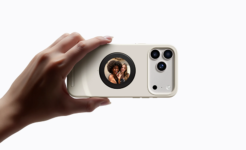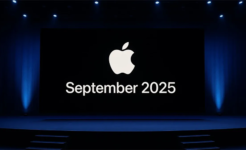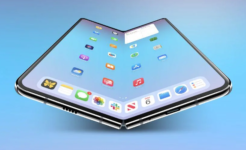
Apple iPhone 8 to Get Facial Recognition over Fingerprint
Just about a week ago, in the article Eight Features iPhone 8 Should Have to Win over Android, we wrote about the biometrical ID feature that might help Apple to win the race against Android phones. And now, the news from Bloomberg! Apple is working on a face-recognition feature to unlock your iPhone, launch sensitive apps, as well as make payments.
While Apple is not the first to implement this ID method into the smartphone, the company certainly pioneered the method of it. Windows Hello hasn’t come to smartphones yet, Samsung relies on the front cam and the soft that stores the irises image for later comparing. Both approaches have their disadvantages. For instance, Samsung can be duped with a 2D image of a user’s eyes and Windows Hello involves an additional cam.
But Apple seeks to use 3-D sensors, which are already used in the industry. The Xbox console’s owners must be familiar with the Kinect sensor that enables gesture-controlled gaming. Kinect features the simplest 3D technology: a controlled light source, which emits the beam of light and measures the backscattered light. There exist more complicated 3D cameras called time-of-flight sensors, which estimate the time delay from light emission to light detection. In a nutshell, they calculate how many milliseconds has fled since the emitted beam of light came back.
Right now, it’s hard to say what technology they prefer in Cupertino. Though the info has leaked, the people close to the development of the new technologies are reluctant to go further into the details. Obviously, the new ID system was chosen because of the edgeless display, which the iPhone 8 is promised to have. The fingerprint reader seems to provide inadequate accuracy when hidden under the touch screen. Spotting it right while unlocking the iPhone can be another problem.
If the 3D ID system takes off, it will mean just another revolution in smartphone manufacturing. While criticizing the Samsung’s iris scanner, experts point out its main disadvantage – 2D perception. Apple has considered the issue, and is pioneering the 3D facial identification for wearables. With any success, this ID system can migrate to Apple Watch, Apple TV, HomePod and more.
Now, implementing 3D facial recognition takes more than just a 3D sensor -even a state-of-the-art one. It must be backed up with the augmented calculation power and battery life, since the very process is extremely energy consuming. Moreover, when we talk about 3D image processing, we talk about artificial intelligence as well. It’s not just simple ‘compare-to-the-saved-pattern’ ID process. Faces can be lit or darkened, users can get all kinds of different facial expressions or even conditions, like an allergic swelling, for example.
Yet, the core facial properties remain the same, like the proportion of a nose to a chin or the distance the eyes are set at. Humans are quick to take in these details, even the most inattentive ones; but, smart gadgets don’t operate with our same conceptions. They need to do math. The image recognition is one of the most challenging tasks for the computer, because it has to copy us.
The iPhone with the 3D facial identification should be able to process the images ‘consciously’. Apple is familiar with the AI concept, after having launched the first ever digital assistant named Siri back in 2011. But now, it’s obvious that conventional CPUs cannot cope with the task. Apple is working on a dedicated AI chip named Apple Neural Engine, which will unload the main CPU and the graphic CPU, which will share the task of processing voice recognition.
It would be a great departure in hardware design. Until now, the AI tasks were shared by existing processing units, or by smaller parts of them at least. For instance, Qualcomm Inc.’s latest Snapdragon chip for smartphones, features a module dedicated to artificial intelligence. It creates an additional load to the main CPU and slows down the overall performance. Google Inc. went further and announced the special AI dedicated Tensor Processing Unit (TPU) last year. But, their product is implemented in cloud servers and aren’t available physically, while Apple is aspiring to install the AI chip into smartphones which anyone can buy.
Of course, we shouldn’t wait for full-scale AI this fall; it’s likely to come with the next generations of the iPhones instead. But, the anniversary edition will certainly cut a new path for the industry to follow.
As for the smartphone design, the iPhone 8 is expected to come all in glass with just a thin steel frame that houses power and volume controls. The only cutouts in the glass will be those for the facial sensor, the front facing camera and the earpiece jack socket.
LINKS
- Apple – The official website.
- Trade in your old iPhone for top cash: Sell iPhone 8 online today!
- Check IMEI – Trying to check IMEI/MEID/ESN for iPhone, iPad, cell Phone, tablet or any other device? You can find complete IMEI history on iGotOffer’s website. We update the database every day. The access is free.
- iCloud Check – You don’t know if your “Find My iPhone” status is ON or OFF? Visit iGotOffer.com to get instantly all the information. All Apple devices with IMEI number are supported (iPhone, iPad, Apple Watch).






Facebook
Twitter
RSS